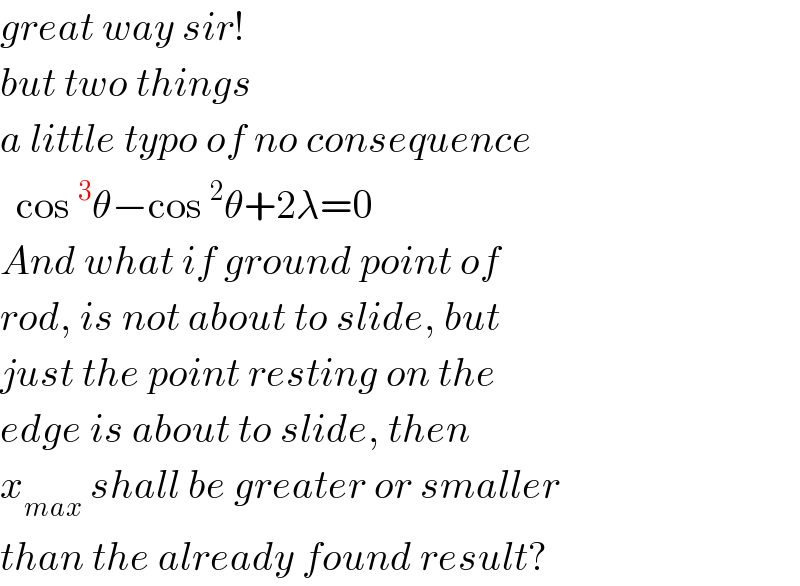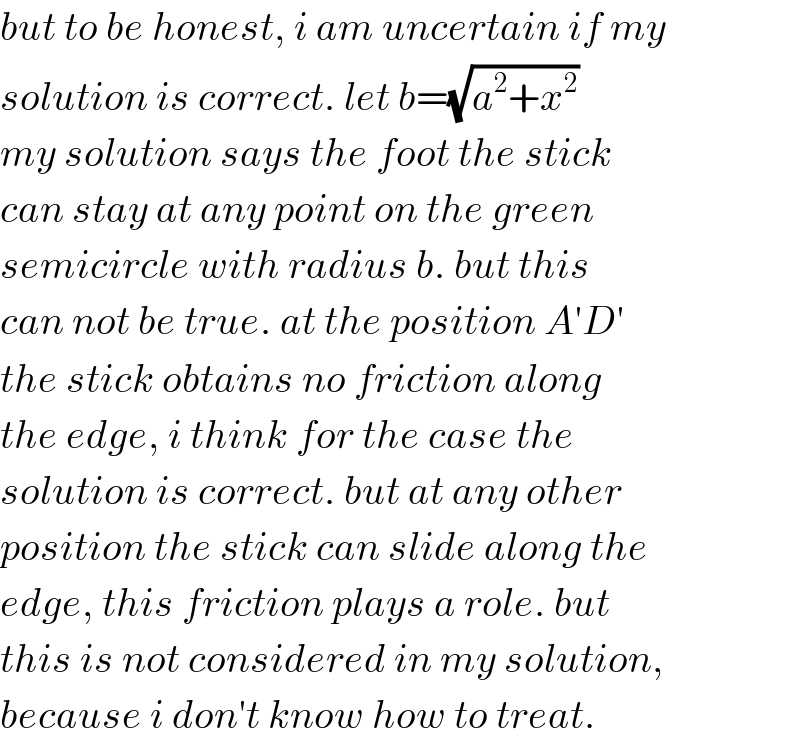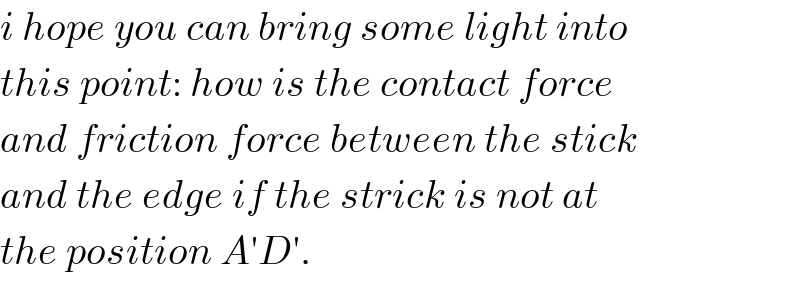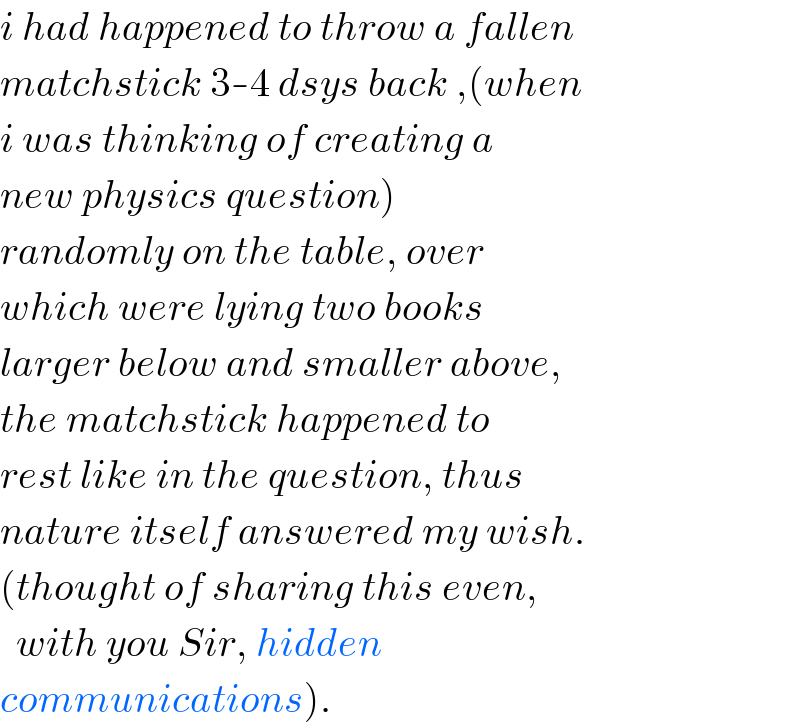
Question and Answers Forum
Question Number 90331 by ajfour last updated on 22/Apr/20

Commented by ajfour last updated on 22/Apr/20

Answered by mr W last updated on 25/Apr/20

Commented by mr W last updated on 26/Apr/20
![the stick is in equilibrium under the acting of three forces, therefore these three must be in the same plane and they must meet at the same point. φ=tan^(−1) μ tan θ=(h/(√(a^2 +x^2 ))) α=φ β=θ−φ ((SM)/(sin ((π/2)−θ−φ)))=((AM)/(sin φ)) ⇒SM=((cos (θ+φ) l)/(2 sin φ))=(l/2)(((cos θ)/μ)−sin θ) ((MB)/(sin β))=((SM)/(sin ((π/2)−θ+β))) ⇒MB=((sin (θ−φ))/(cos φ))(((cos θ)/μ)−sin θ)×(l/2) ⇒MB=(((cos θ−μ sin θ)(sin θ−μ cos θ))/μ)×(l/2) AB=(h/(sin θ)) [1+(((cos θ−μ sin θ)(sin θ−μ cos θ))/μ)]×(l/2)=(h/(sin θ)) sin θ[1+(((cos θ−μ sin θ)(sin θ−μ cos θ))/μ)]=((2h)/l) ⇒sin^2 θ cos θ=((2μh)/((1+μ^2 )l)) with λ=((μh)/((1+μ^2 )l)) ⇒cos^3 θ−cos θ+2λ=0 cos θ=((2(√3))/3) sin ((1/3)sin^(−1) 3(√3)λ+((2kπ)/3)) (k=0,1,2) generally we get two suitable values for θ. the smaller one leads to larger value of x, therefore we take only this solution: let (1/δ)=((2(√3))/3) sin [(1/3)sin^(−1) ((3(√3)μh)/((1+μ^2 )l))+((2π)/3)] tan^2 θ=(h^2 /(a^2 +x^2 ))=(1/(cos^2 θ))−1=δ^2 −1 ⇒x^2 =(h^2 /(δ^2 −1))−a^2 ⇒x=(√((h^2 /(δ^2 −1))−a^2 ))](Q90675.png)
Commented by ajfour last updated on 26/Apr/20

Commented by mr W last updated on 25/Apr/20

Commented by ajfour last updated on 26/Apr/20

Commented by mr W last updated on 26/Apr/20

Commented by mr W last updated on 26/Apr/20

Commented by mr W last updated on 26/Apr/20

Commented by mr W last updated on 26/Apr/20

Commented by ajfour last updated on 26/Apr/20

Commented by ajfour last updated on 26/Apr/20

Commented by mr W last updated on 26/Apr/20

